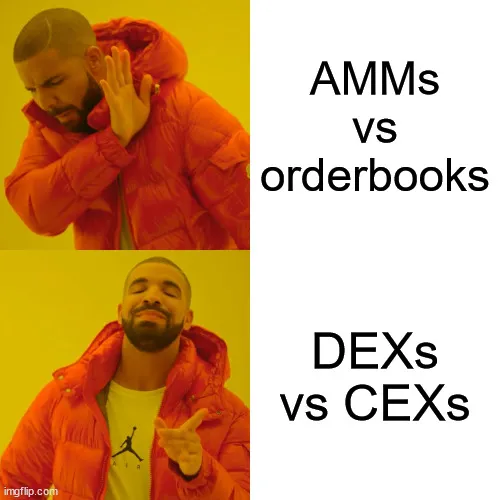The hottest debate in DeFi is orderbooks vs AMMs. I recently listened to a fantastic episode of the Bell Curve podcast that went into further depth on this debate. In my opinion, prevailing consensus stands around here:
- Professional market makers will always out-compete retail liquidity providers on larger pairs.
- Retail LPs will continue to be the largest source of liquidity for long-tail pairs .
- Passive liquidity is important to DeFi, even if LP economics do not make sense in all seasons and for all pairs. This is solvable with dynamic fees.
- Off-chain orderbook architectures with on-chain settlement is the most viable “CEX killer” solution.
- RFQs and other systems that rely on professional liquidity providers will further entrench liquidity intermediation in DeFi.
With this in mind, philosophically, there is no reason to be “against” either of these solutions. There is all the reason in the world to be “for” both of these solutions. In the end, we must realize that the end-goal is to minimize CEX market share. It’s a tough goal — and CEXs will never truly disappear (nor should they).
AMMs will co-exist alongside orderbooks and other intent-centric architectures like RFQ systems. I’m particularly excited about the advent of verifiable PFOF through the likes of dFlow, which promises to rid us of the backdoor agreements and the poor bid/ask measurement landscape that plagues PFOF in TradFi.

Rather than trying to decide which type of DEX architecture wins and concentrating your bets there, I think investors need to accept that we will have multiple flavors of DEXs. In my opinion, there is far more upside in attempting to establish a thesis for what the landscape looks like (with the above context in the mind) and placing your chips accordingly. If you want to understand my thinking around this a little more, I published a thread along similar lines last month.